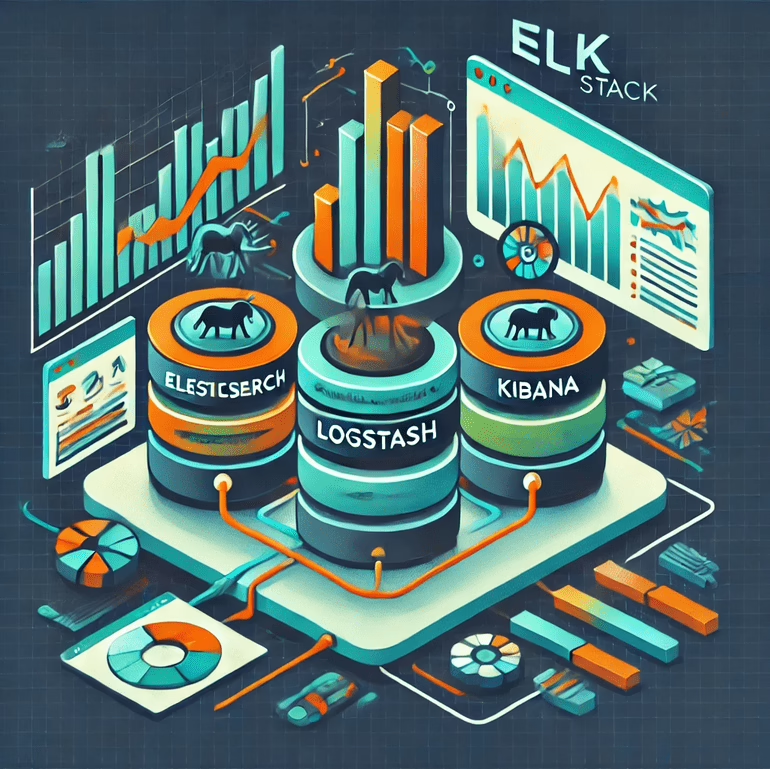TeamCity:
Optimizing CI/CD Workflows with Curate Consulting's Expertise
In the increasingly complex landscape of software development, the need for robust tools that streamline and automate the development process is more crucial than ever. Continuous Integration (CI) and Continuous Delivery (CD) have become foundational practices in modern development environments, enabling teams to detect issues early, automate testing, and efficiently deploy code. Among the many tools available for CI/CD, TeamCity, a commercial server-based platform developed by JetBrains, stands out for its versatility, powerful features, and seamless integration with JetBrains’ development tools.
This article provides an in-depth analysis of TeamCity, exploring its key features, the benefits it brings to software development teams, and how Curate Consulting Services can help organizations maximize the potential of this powerful CI/CD platform.
Understanding the Role of CI/CD in Modern Software Development
Before diving into the specifics of TeamCity, it’s important to understand the pivotal role that Continuous Integration and Continuous Delivery play in modern software development. CI/CD practices are designed to ensure that software can be reliably built, tested, and deployed in a consistent manner, reducing the time between coding and deployment while minimizing the risk of errors.
Continuous Integration (CI):
Continuous Integration involves automatically integrating code changes from multiple contributors into a shared repository multiple times a day. Each integration is verified by an automated build (including testing) to detect errors as quickly as possible. This practice is essential for preventing integration problems, also known as “integration hell,” which can arise when integrating late in the development process.
Continuous Delivery (CD):
Continuous Delivery extends the concept of Continuous Integration by automating the release process. After code has been tested and built, it is automatically prepared for deployment to production. This approach ensures that software can be released at any time, without the need for manual intervention, enabling teams to deliver new features and updates more frequently and reliably.
Introducing TeamCity: A Comprehensive CI/CD Platform
TeamCity is a commercial CI/CD platform developed by JetBrains, known for its powerful development tools like IntelliJ IDEA, PyCharm, and ReSharper. TeamCity provides a comprehensive solution for automating the software development process, offering features that cater to both small development teams and large enterprises.
Key Features of TeamCity:
Continuous Integration (CI):
TeamCity automates the process of building and testing code as soon as it is committed to a version control system, such as Git or Subversion. It supports a wide range of programming languages and platforms, making it a versatile choice for various types of software projects.Configuration as Code:
One of the standout features of TeamCity is its support for configuration as code through Kotlin DSL. This allows users to define build configurations using a domain-specific language, providing a clear, version-controlled way to manage build settings. This approach promotes consistency, repeatability, and ease of maintenance in complex CI/CD environments.Build Agents and Parallel Builds:
TeamCity employs build agents that execute build and test jobs. These agents can be distributed across different machines, enabling parallel and concurrent builds. This capability significantly reduces build times, increasing the efficiency and throughput of the CI/CD pipeline.Customizable Execution Environments:
Users can specify custom build environments within TeamCity, including the operating system, runtime versions, and services required for testing and deployment. This flexibility ensures that builds are conducted in environments that closely mirror production, reducing the likelihood of issues arising during deployment.Docker Support:
TeamCity provides built-in support for Docker, allowing users to build, test, and deploy Docker containers as part of their CI/CD pipeline. This feature is particularly valuable for teams adopting microservices architectures or containerization as part of their development strategy.Flexible Build Pipelines:
TeamCity enables users to create complex and customized build pipelines with multiple build steps and dependencies. These pipelines can include build, test, and deployment stages, making TeamCity suitable for continuous delivery workflows that require a high degree of flexibility and control.Integration with JetBrains Tools:
TeamCity is designed to work seamlessly with JetBrains’ integrated development environments (IDEs), such as IntelliJ IDEA, PyCharm, and ReSharper. This tight integration allows developers to perform code inspections, run tests, and measure code coverage directly within their IDE, enhancing the developer experience and promoting best practices.Extensive Plugin Ecosystem:
TeamCity offers a marketplace of plugins and integrations that extend its functionality, allowing users to connect with various third-party tools, services, and version control systems. This extensibility makes TeamCity a highly adaptable platform that can be tailored to the specific needs of any development team.Notifications and Reporting:
TeamCity provides robust notification features to alert users about build and deployment statuses via email, messaging platforms, and other channels. Additionally, detailed build reports and logs are available to help diagnose issues, track performance, and ensure that the CI/CD pipeline is functioning optimally.Security and Access Control:
TeamCity includes advanced security features, allowing users to define roles and access permissions for different team members. This ensures that only authorized individuals can configure and manage build configurations, protecting the integrity of the CI/CD pipeline.On-Premises and Cloud Options:
TeamCity is available as an on-premises solution, allowing organizations to host it within their own infrastructure. For teams looking for a managed service, JetBrains also offers TeamCity Cloud, which is hosted by JetBrains and provides all the features of the on-premises version without the overhead of managing the infrastructure.
The Benefits of TeamCity for Software Development Teams
TeamCity’s robust feature set makes it an invaluable tool for development teams looking to optimize their CI/CD workflows. Here are some of the key benefits that TeamCity offers:
Enhanced Productivity:
By automating repetitive tasks such as builds, tests, and deployments, TeamCity frees up developers to focus on writing code and solving complex problems. This increased productivity can lead to faster delivery times and a higher quality end product.
Improved Code Quality:
With features like automated testing, code inspections, and code coverage analysis, TeamCity promotes best practices and helps teams maintain high standards of code quality. Early detection of issues reduces the likelihood of bugs making it to production, enhancing the reliability of the software.
Faster Time-to-Market:
TeamCity’s support for parallel builds, distributed build agents, and customizable build pipelines allows teams to accelerate their development cycles. This speed is crucial in industries where time-to-market is a key competitive advantage.
Flexibility and Scalability:
Whether you’re managing a small project or a large enterprise application, TeamCity scales to meet your needs. Its flexibility in defining build pipelines and environments makes it suitable for a wide range of projects, from simple applications to complex, multi-platform systems.
Seamless Developer Experience:
For organizations that use JetBrains’ IDEs, TeamCity offers an integrated development experience that enhances productivity and ensures that best practices are followed throughout the development process. The ability to perform CI/CD tasks directly within the IDE streamlines the workflow and reduces context switching.
How Curate Consulting Can Help You Leverage TeamCity
While TeamCity offers powerful tools for automating CI/CD workflows, its successful implementation and optimization require specialized expertise. Curate Consulting Services is well-equipped to help organizations maximize the potential of TeamCity, ensuring that your development processes are optimized for speed, quality, and efficiency.
Expert Talent Acquisition:
Finding the right talent to manage and optimize TeamCity workflows can be a challenge. Curate Consulting specializes in identifying and recruiting professionals with the skills and experience needed to effectively use TeamCity. Whether you’re looking for DevOps engineers, CI/CD specialists, or software developers with expertise in JetBrains tools, Curate Consulting can help you build a team that meets your needs.
Customized Consulting Services:
Every organization has unique CI/CD requirements, and Curate Consulting offers tailored services to help you implement TeamCity in a way that aligns with your goals. From designing CI/CD pipelines to optimizing existing workflows, Curate Consulting provides the support you need to succeed.
Training and Development:
Continuous learning is essential in the ever-evolving world of software development. Curate Consulting offers training programs to upskill your existing teams, ensuring that they are proficient in using TeamCity and other CI/CD tools. This investment in training helps your team stay competitive and effective in their roles.
Ongoing Support and Maintenance:
The journey doesn’t end with the initial setup of TeamCity. Ongoing support and maintenance are crucial to ensure that your CI/CD pipelines remain efficient and effective. Curate Consulting offers continuous support services to help you manage and optimize your TeamCity infrastructure over time, ensuring that your development processes are always running smoothly.
Conclusion: TeamCity and the Future of Software Development
As software development continues to evolve, the need for efficient, reliable, and automated CI/CD processes will only grow. TeamCity is at the forefront of this evolution, offering a powerful toolset for automating the building, testing, and deployment of software projects. By adopting TeamCity, development teams can enhance their workflows, improve code quality, and accelerate their release cycles.












